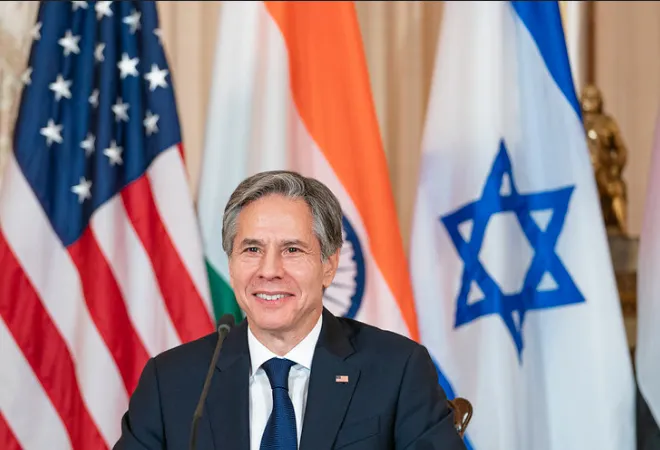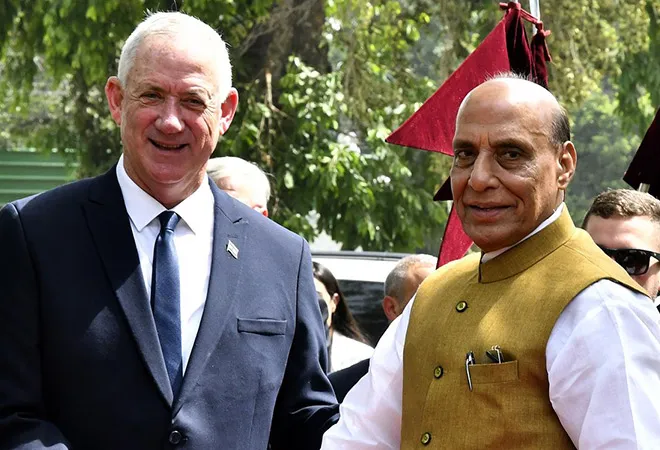In November 2023, the Ministry of Skill Development and Entrepreneurship (MSDE), Government of India (GoI), entered into a three-year agreement with the Israeli government to facilitate ‘the temporary employment of Indian workers in specific labour market sectors’, especially in the construction industry. This agreement followed Israel’s change in strategy for the intake of migrant labour in the wake of the Hamas attack, where it cancelled the work permits of thousands of Palestinians. Instead, it recruited Indians and workers from other countries into their labour-starved industries, including shuttering, carpentry, ceramic tiling, plastering and iron bending, with mandatory knowledge of reading construction plans.
The National Skills Development Corporation (NSDC) and district labour officers facilitate recruitment through social and traditional media publicity. The enthusiasm to prepare India’s youth workforce to work in Israel gains significance, as about 18,000 Indians are already working in Israel, primarily in the caregiver sector. Other countries have also sent similar requests. Greece has approached India for about 10,000 seasonal workers on farmlands, and Italy would like to avail of Indians working for their municipal services. Increased demand for Indian labour abroad follows the establishment of bilateral agreements with several developed countries to simplify processes and facilitate skilled and semi-skilled Indian labour to fill labour shortages in those countries.
Droves of young migrants from rural areas or smaller towns have come to India’s premier cities for employment.
Such bilateral pacts provide a great opportunity to prepare India’s urban youth for quality employment abroad. Droves of young migrants from rural areas or smaller towns have come to India’s premier cities for employment. Only some are fully employed; others are sub-optimally engaged, and many are without jobs. Suitable skilling of such youth to take on responsibilities abroad can address this situation—it can reduce the burden of creating employment in Indian cities, leading to lesser unemployment, smaller demography, reduced pressure on city infrastructure and better law and order.
In this regard, the Deendayal Antyodaya Yojana-National Urban Livelihoods Mission (DAY-NULM), launched by the Ministry of Housing and Urban Poverty Alleviation (MHUPA), could play a massive role in generating opportunities for skill development that could make the urban youth eminently employable in different markets, including international. Additionally, GoI’s National Skills Qualifications Framework (NSQF), which organises qualifications through an analysis of knowledge, aptitude and skills, could also play a significant role. The Directorate General of Training (DGT) has aligned its courses with the National Skills Qualifications Framework (NSQF) to ensure uniformity of training and learning across all programmes and create a standardised skilled workforce with a high degree of horizontal and vertical mobility. DGT, National Skill Development Corporation (NSDC) and Adobe India have also signed a tripartite MoU on skill development. These initiatives lead to the international and national mobility of people with capacities and satisfy the NSQF through added value and benchmarking Indian qualifications with international standards.
Positive results could be boosted by establishing better coordination between the Ministry of Skill Development, which provides informal vocational courses, and the Ministry of Human Resource Development, which is accountable for school- and university-level vocational courses. Such efforts could have enhanced outcomes if NSDC included skills in broader occupational groups so that the urban youth are better skilled to compete internationally.
GoI’s National Skills Qualifications Framework (NSQF), which organises qualifications through an analysis of knowledge, aptitude and skills, could also play a significant role.
Unfortunately, the India-Israel agreement has come under criticism from several quarters in India for pushing young Indians into a war zone. The Centre for Indian Trade Unions (CITU) on 15 January 2024 condemned the initiative and appealed to Indian workers not to take up a job in Israel. Its affiliate, the Construction Workers Federation of India (CWFI), expressed concern that the lives of the Indian youth would be put at risk. They feared that this would push them into a death trap. Similarly, different parties have drawn attention to the massive unemployment sweeping the country that is forcing youngsters into red zones and has urged security and generous insurance provisions to the workers who are going to Israel.
Such criticism appears to have had no impact on the youth themselves. Young employment seekers from Haryana, Rajasthan, Uttar Pradesh, Bihar and Punjab have rushed to recruitment centres to undertake the skill tests in far larger numbers than the jobs offered. Many of them are unemployed, and those who have them earn a meagre monthly salary of between INR 10 to INR 20 thousand a month. For them, the Israel-Hamas conflict does not act as a deterrent. The attraction of earning INR 1.37 lakh per month as salary far outweighs the risks. Some employed youth queueing up for jobs in Israel pointed out that their current jobs are also far away from their homes, and they can visit their families only once a year. The stint in Israel, they believe, is going to transform their lives.
Different parties have drawn attention to the massive unemployment sweeping the country that is forcing youngsters into red zones and has urged security and generous insurance provisions to the workers who are going to Israel.
India has a large diaspora in several countries of the world. This was estimated to be around 32.3 million in December 2018, an increase of approximately 20 million since 1981. Those in the West and developed countries are men and women at the top end of the working ladder, doing very well for themselves and contributing handsomely to the countries of their residence with their skillsets and services. In other countries, especially in the Middle East, Indians primarily provide labour, which is equally vital in developing infrastructure and services in those countries.
Remittances to the home country by Indians residing abroad have progressively risen over the years. In 2017-18, the total foreign inward remittance was US$69,129 million. This went up to US$89,127 million in 2021-22. The World Bank estimates remittances to India to be US$125 billion in 2023. About 20 to 25 percent of these can be attributed to skilled/semi-skilled blue-collar workers in the Middle East.
The export of urban labour from India can be seen from several perspectives. India, with a huge young population, has struggled for several decades to find suitable employment for all young women and men, as cited earlier. In the given context, keeping the urban young unemployed or underemployed does not make sense if alternatives are available outside the country. This is a meaningful way of reducing unemployment within the country. For countries with ageing populations, migrant labour provides them the lifeline to keep their industries running. The recipient countries can also upscale their industrial and economic activities, which would not have been possible without the availability of migrant labour.
India, with a huge young population, has struggled for several decades to find suitable employment for all young women and men, as cited earlier.
For the migrant labourers themselves, it is a huge win, as many have explained. It provides them with more profitable employment than they would hope to earn in this country, assuring them of supporting their families, enabling them to build a corpus, and ultimately move out of poverty. While working abroad, where the average stay of Indian labourers is five years, they tend to upgrade their skills. This should be a bonus when finding jobs after returning home.
The donor country gains through remittances made by the migrant labourers. In India, the remittances from the GCC (Gulf Cooperation Council) countries {Bahrain, Kuwait, Oman, Qatar, Saudi Arabia and United Arab Emirates (UAE)}, where the Indian migrants are predominantly labourers, were around US$25 billion in 2021-2022. Labour outflows from economically less affluent states such as Uttar Pradesh and Bihar have risen compared to the wealthier states, providing a safety valve for those states that do not have the economic muscle to support their young women and men with job opportunities.
Against this backdrop, it is appropriate that a donor country is facilitating such labour migration worldwide. Just as the quality and role of India’s Western diaspora have been globally recognised, those skilled labourers from India who have travelled abroad for work are appreciated for their determined and quiet contribution to building up those nations. On this account, countries in the West also seem to be opting for Indian labour.
On the part of the donor country, it would be vital that it participates in strengthening processes that govern the well-being of the labourers in the recipient countries. For this purpose, cohesive legislation and policies that take cognisance of the welfare and rights of migrant workers ought to be paid adequate attention. In this regard, India needs to build up comprehensive data on labour outflows country-wise for better engagement on the questions of migrant labour.
___________________________________________________________________________________________________________________________
Ramanath Jha is a Distinguished Fellow at the Observer Research Foundation












